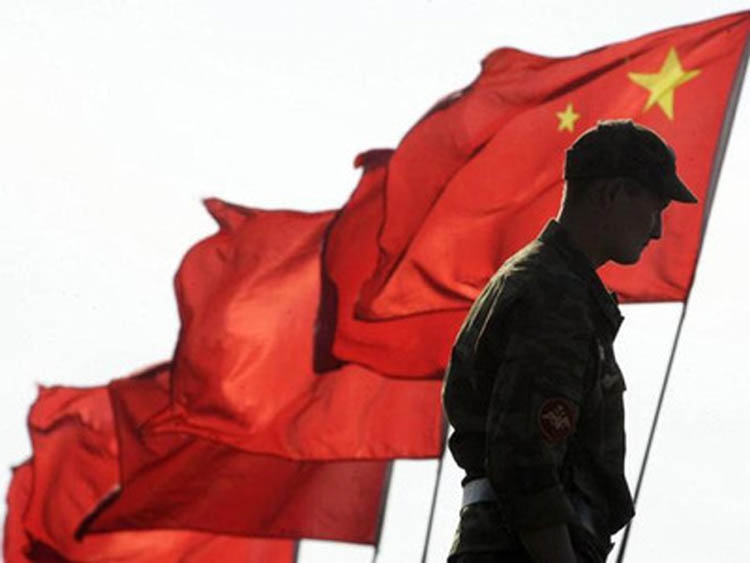The message out of Doklam -The Asian Age

That India and China finally managed to negotiate a peaceful end to their military stand-off over disputed Doklam plateau at the trijunction with Bhutan must have come as a big relief for peace in South Asia. Any military conflict between nuclear armed India and China on the issue, which was not totally ruled out ever since the face-off had begun in June this year, would have brought disastrous consequences for not only India and China but to a much lesser extend to South Asia and beyond.
War was certainly not an option for either, belligerent rhetoric from China notwithstanding, in any case. So, it was a question of time that time was allowed for diplomats in New Delhi and Beijing to work out an honourable way out of the two-month stalemate.
Both New Delhi and Beijing had set out the main parameters of the deal to scale back the tensions at Doklam: Delhi wanted disengagement of troops by both sides and restoration of the situation before China's road construction attempt while Beijing wanted withdrawal of Indian troops from the area..
At the root of the standoff was China's attempt to construct a road towards Jhamperi ridge in the Himalayas in Bhutan and annex the Doklam plateau (located between Bhutan and Indian state of Sikkim) that would expose a narrow strip of land called the "Chicken's Neck" that connects mainland India with north eastern parts of India. Therefore, a big takeaway for India from the latest settlement is that it has been able to get China to stop that road construction which is of strategic significance for China from military point of view.
India does not claim Doklam to be its territory and it is an area disputed by China and Bhutan. However, what India objects to is China's road-building bid there in violation of an understanding on the trijunction arrived at in 2012. India wanted China to maintain the status quo as per that understanding and did not want China to change the ground realities.
This was unambiguously articulated by Indian External Affairs Minister Sushma Swaraj in the monsoon session of parliament in August this year. Point no 13 of the 2012 understanding clearly says that "the trijunction boundary points between India, China and third countries (read Bhutan) will be finalized in consultation with the concerned countries."
The 2012 understanding reached between special representatives of India and China on their vexed border issue clearly rejects Beijing's contention that India should not come into the picture of a dispute between Bhutan and China and underlines that New Delhi has a special relationship with Thimphu to protect the latter's interests.
While India and China have not held any discussion on Doklam since 2012 Bhutan and China too have not been able to resolve the issue in 24 rounds of discussions between them since mid-1980s. The Doklam issue and the resolution of the latest faceoff drives home the point that India will stand with it smaller allies in South Asia and beyond in the face of China's military and economic might. In the case of Doklam, New Delhi did it with dogged diplomacy and alliances and military resolve.
In a deft move, India held back from matching the aggressive rhetoric that had been emanating from China on almost on a daily basis for the last two months of Doklam standoff and worked quietly and steadfastly on diplomatic and military fronts.
Even as it kept open diplomatic channels with China, India moved its military men and machines not only to Doklam but in key parts of its long de facto border with China stretching from the Western Himalayas to the Eastern Himalayas. Having learnt the lessons from the 1962 war with China, India dug its heels and braced for heightened military presence along the border in monsoon and the harsh winter.
The underlying assumption in New Delhi is that China may want to widen the conflict zone beyond Doklam where Indian military has a clear geographical advantage being on a higher altitude. India does not enjoy that advantage in some other parts of the border with China. Although China has better border infrastructure, India was ready with men and material for a long haul in the event of a war.
India came into the picture on the Doklam issue only after China tried to exert pressure on a small country like Bhutan. The message from Doklam standoff and its resolution for now will not be lost on not only small countries in South Asia which share border with China but also on ASEAN countries like Vietnam, Mongolia, the Philippines, Singapore as also Japan that have been territorial disputes with China.
With its huge financial muscle, China has since long been pushing hard smaller ASEAN countries like Cambodia, Laos and the Philippines luring them with investments in their infrastructure and stalling a unified stand against Beijing in territorial disputes.
Countries like Vietnam and Singapore, Japan and Mongolia, China's another small neighbour, have so far stood up firmly to China. There is expectation that the Doklam episode would serve to enhance India's bid for claiming the status of a net security provider in South Asia and beyond to help its smaller neighbours to protect their territorial integrity.
The writer is a senior Indian journalist based in Delhi
The writer is a senior Indian journalist based in Delhi
